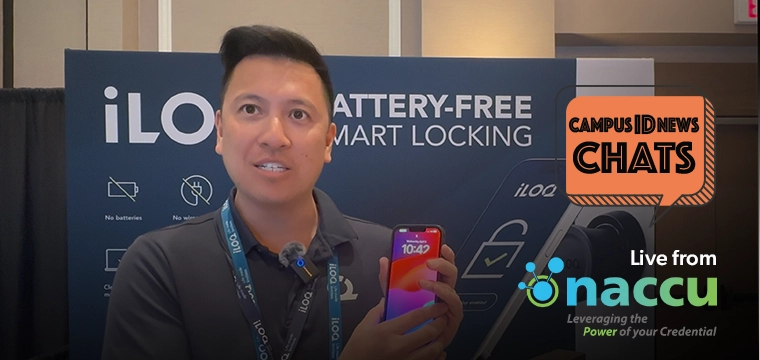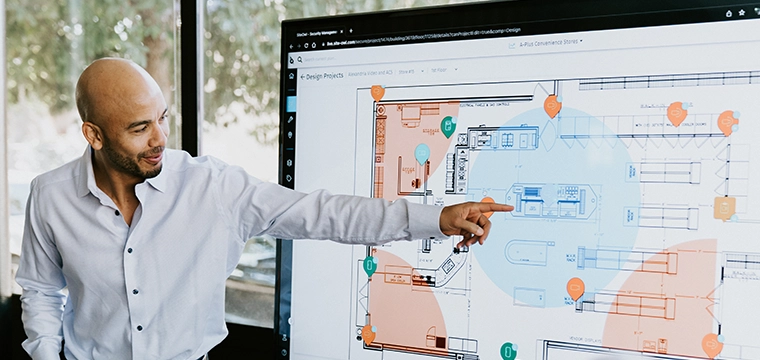Focus shifting from high security to convenience, speed
“Students love the biometric solution and they know it is cutting edge,” says Marc Robillard, BU’s Executive Director of Auxiliary Services. “We had very little pushback, especially since all the biometric data is stored on the card rather than in a database. By and large, they love the speed and convenience of biometrics.”
Winthrop University rolled out iris biometrics in the fall and is capturing the data from all incoming students as it contemplates expanding use of the security technology. The university’s 6,170 students will begin testing the iris scanners at an on-campus pre-school where the university’s education majors are trained, says John Hammond, associate vice president for information technology at Winthrop.
The identities of parents and guardians will be verified using the technology when they pick up their children. Winthrop officials did review other options before going with iris, Hammond says. ID cards were dismissed because there were concerns about parents and guardians having to carry them all the time.
The system is also deployed for access at the Carroll Capital Markets Training & Trading Center, a mock high-tech trading floor on campus. Students can use their iris to scan into the facility.
Fingerprint was considered but the university had previous experience with the modality and wasn’t pleased with the results. There were also hygiene concerns with a fingerprint modality. Iris had always intrigued Hammond but he had assumed it was too expensive. “But then we saw the price went down,” he says.
Winthrop found positive results with iris readers from Iris ID, but there was integration required to make it work with the existing campus card and physical access control systems. The Weigand output didn’t integrate with Winthrop’s systems so a programmer on staff had to work to make it match up, says Hammond.
Another programmer worked to ensure the information housed in the database was the same format as the card access system. “The card access system thinks you’re using a card but it’s actually using the iris,” he explains.
Enrollment stations are operational in the card office, Hammond says. Parents and guardians are enrolling so when the system goes live in the fall, it can be used right away. Winthrop is also enrolling anyone that comes into the card office for any type of maintenance as well as all incoming freshmen to prepare for future uses.
To enroll, individuals stand 12 to 14-inches away from the scanner and look into a mirror. An LED inside let’s the subject know when they’re in the correct position and the scanner captures the image to create the template, Hammond says.
While the scanners will initially be in the lab school only, Hammond envisions other uses including residence hall and rec center access where it is inconvenient to carry an ID card to work out or swim.
The Chemistry Department has also approached Hammond about using the scanner for physical access in some of their areas. This application would be a combination of security–making sure the unauthorized don’t have access to chemicals–and convenience because students would be wearing gloves and often have their hands full when trying to access a door.
Winthrop isn’t mandating that everyone enroll in the system. There have been about 10 people who haven’t wanted to participate because of personal beliefs. “For people who decline to participate we’re telling them that access to some services might not be as convenient,” Hammond explains. “They might have to be buzzed in or wait a little longer.”
The main criticism of the system has been cost, Hammond notes. The iris cameras are around $2,500 per door whereas a magnetic stripe reader is a fraction of that. “We believe it’s justified with the added security and convenience,” he adds.
Biometrics in high-security areas using multi-factor authentication for physical access is not new on campus; nor is the technology’s deployment for niche applications like rec center access. But additional everyday uses are being considered more often, says Kent Pawlak, director of product strategy at Blackboard. “In the last few years the use of biometrics for convenience has taken off and I think we’ll see more of that,” he adds.
The recreation center is a prime example of a convenient use of biometrics, an example that is being followed by some major fitness chains that have also deployed fingerprint sensors for access to their facilities. The use of identification technology in the food service arena, however, is less about convenience than protecting a valuable asset, Pawlak says. “There are more unlimited meal plans out there and greater concern for sharing ID cards,” he explains.
Classroom attendance is another application that could leverage biometrics, says NuVision’s Adoff. Trade schools that have hourly requirements are using biometrics to keep track of attendance rather than requiring students to swipe an ID. It also prevents a fellow student from swiping another student’s ID card.




